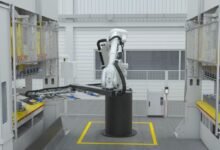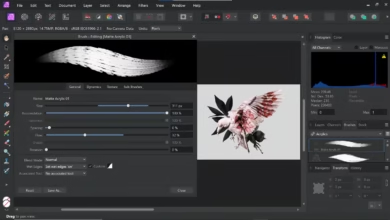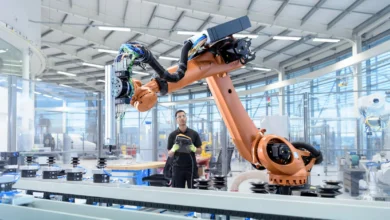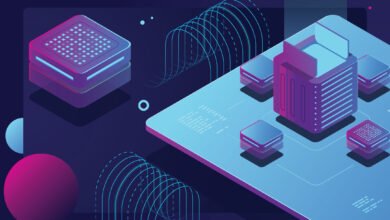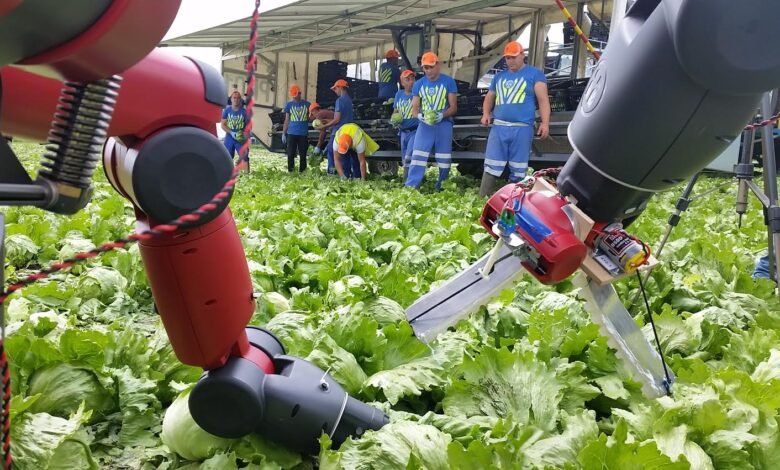
The global agricultural landscape is undergoing a revolutionary transformation as agricultural robotics emerges as a game-changing solution to meet the world’s growing food demands. With the Food and Agriculture Organization projecting that farming production must increase by one-third by 2050, smart farming technologies have become essential rather than optional. Agricultural robotics represents the convergence of artificial intelligence, machine learning, automation, and precision agriculture, creating intelligent systems that can plant seeds, monitor crop health, harvest produce, and manage soil with unprecedented accuracy.
Today’s farming robots are far more sophisticated than their predecessors, equipped with advanced sensors, computer vision, GPS navigation, and autonomous decision-making capabilities. These robotic farming solutions address critical challenges facing modern agriculture including labor shortages, rising operational costs, environmental sustainability concerns, and the need for increased productivity on limited arable land. From autonomous tractors navigating vast fields to delicate robotic arms picking strawberries with human-like precision, agricultural robotics is redefining what’s possible in food production.
The smart farming revolution extends beyond large-scale commercial operations, offering scalable solutions for farms of all sizes. Precision agriculture powered by robotics enables farmers to optimize resource utilization, reduce chemical inputs, minimize environmental impact, and make data-driven decisions that enhance both yield and quality. As technology costs decline and capabilities expand, agricultural robots are becoming increasingly accessible, positioning farmers to meet tomorrow’s challenges with today’s innovation.
This comprehensive exploration delves into the transformative world of agricultural robotics, examining the various types of farming robots, their applications across different agricultural operations, the tangible benefits they deliver, implementation challenges, and the promising future that lies ahead. Whether you’re a farmer considering automation, an agribusiness professional, or simply curious about agricultural innovation, understanding robotic farming is essential for grasping the future of global food security.
What is Agricultural Robotics
Agricultural robotics refers to the application of autonomous or semi-autonomous robotic systems designed specifically for farming operations and food production processes. These sophisticated machines combine mechanical engineering, computer science, artificial intelligence, and agricultural expertise to perform tasks traditionally requiring human labor. Robotic farming encompasses a wide spectrum of technologies, from simple automated irrigation systems to complex multi-functional robots capable of seeding, weeding, monitoring, and harvesting crops.
At its core, agricultural robotics leverages sensors, actuators, navigation systems, and intelligent software to execute precise farming activities. Modern farming robots utilize technologies such as GPS positioning, LiDAR mapping, computer vision, machine learning algorithms, and real-time data analytics to understand their environment and make autonomous decisions. This technological integration allows agricultural robots to operate continuously, often with minimal human supervision, performing repetitive tasks with consistency that surpasses human capabilities.
The smart farming ecosystem enabled by robotics includes field robots for outdoor crop management, greenhouse automation systems for controlled environment agriculture, livestock monitoring robots, and post-harvest processing automation. These systems communicate with farm management software, cloud platforms, and other Internet of Things devices, creating a comprehensive digital agriculture infrastructure. Precision agriculture applications powered by robotics can detect individual plant health, apply fertilizers with millimeter accuracy, identify and remove weeds without chemicals, and harvest only perfectly ripe produce.
Agricultural robotics also addresses the significant labor crisis facing global agriculture, where seasonal worker shortages and rising wages threaten farm profitability and food security. By automating labor-intensive processes, robotic farming enables farmers to maintain productivity regardless of workforce availability. Additionally, these systems generate valuable data insights about soil conditions, crop development, pest pressures, and operational efficiency, transforming farming from an experience-based practice into a data-driven science.
Types of Agricultural Robots
Harvesting Robots
Harvesting robots represent one of the most advanced and commercially viable applications of agricultural robotics. These specialized machines use computer vision and artificial intelligence to identify ripe fruits, vegetables, or crops, then employ robotic manipulators to pick them with appropriate delicacy. Companies have developed farming robots capable of harvesting strawberries, apples, lettuce, tomatoes, and even delicate crops that were previously thought impossible to automate.
The technology behind robotic harvesting includes multi-spectral imaging that assesses ripeness beyond human visual capability, soft robotic grippers that prevent bruising, and machine learning algorithms that improve picking accuracy over time. These agricultural robots can work continuously throughout day and night, dramatically increasing harvest efficiency while reducing labor costs. For operations facing severe seasonal labor shortages, harvesting robots provide a reliable solution that ensures crops are picked at optimal ripeness, reducing waste and improving quality.
Weeding and Crop Management Robots
Weeding robots employ computer vision and precision mechanics to identify and eliminate unwanted plants without damaging crops or relying on herbicides. These smart farming solutions use various methods including mechanical removal, targeted micro-spraying, laser ablation, and even electrical discharge to control weeds. By recognizing specific plant characteristics and distinguishing crops from weeds at the individual plant level, agricultural robotics enables truly selective weed management.
The environmental benefits of robotic weeding are substantial, reducing herbicide usage by up to 90% in some applications while preventing the development of herbicide-resistant weed species. These farming robots can operate between crop rows and even within rows, removing weeds that would be impossible to control mechanically with traditional equipment. Some advanced systems combine seeding and weeding functions, remembering exact planting locations to enable intra-row weeding throughout the growing season.
Planting and Seeding Robots
Planting robots automate the critical task of seed placement with precision that ensures optimal germination and plant spacing. These agricultural robots use GPS guidance and sophisticated seed delivery mechanisms to achieve perfect row spacing, depth control, and seed-to-seed uniformity. Precision agriculture seeding robots can adjust planting parameters based on real-time soil condition data, creating variable rate seeding prescriptions that optimize plant populations across different field zones.
Advanced robotic farming seeding systems can handle multiple crop types, automatically adjusting mechanisms for different seed sizes and planting requirements. Solar-powered autonomous planters can work continuously without refueling, marking exact planting locations in memory to enable coordinated weeding and harvesting operations later in the season. This integrated approach to smart farming transforms planting from an isolated task into the foundation of a fully coordinated robotic production system.
Monitoring and Scouting Robots
Agricultural monitoring robots serve as the eyes and ears of modern farms, continuously collecting data about crop health, soil conditions, pest pressures, and environmental factors. These farming robots include ground-based rovers and aerial drones equipped with various sensors including RGB cameras, thermal imaging, multispectral and hyperspectral sensors, and even gas detectors for early disease identification. The data collected enables precision agriculture decision-making based on objective, comprehensive field intelligence.
Ground-based monitoring robots can navigate between crop rows, capturing high-resolution plant-level imagery that reveals stress symptoms invisible to the human eye. These agricultural robotics platforms detect nutrient deficiencies, water stress, disease outbreaks, and insect damage at the earliest stages when intervention is most effective and least costly. Combined with artificial intelligence analysis, robotic scouting systems provide automated alerts and treatment recommendations, transforming reactive farming into proactive crop management.
Soil Management and Preparation Robots
Soil management robots handle the foundational work of preparing fields for planting, including tilling, rock removal, soil sampling, and amendment application. These agricultural robots use autonomous navigation to operate tractors and implements with precision that exceeds manual operation. Advanced robotic farming systems can perform variable-depth tillage based on soil composition maps, reducing energy consumption while optimizing seedbed preparation.
Rock-picking farming robots use computer vision and robotic arms or specialized collection mechanisms to clear fields of stones that damage equipment and interfere with planting. Autonomous soil sampling robots collect georeferenced samples across fields, providing detailed soil chemistry and biology data that guides fertilization strategies. By integrating smart farming technologies into soil management, these robots enable the precision soil health management essential for sustainable, productive agriculture.
Benefits of Agricultural Robotics in Smart Farming
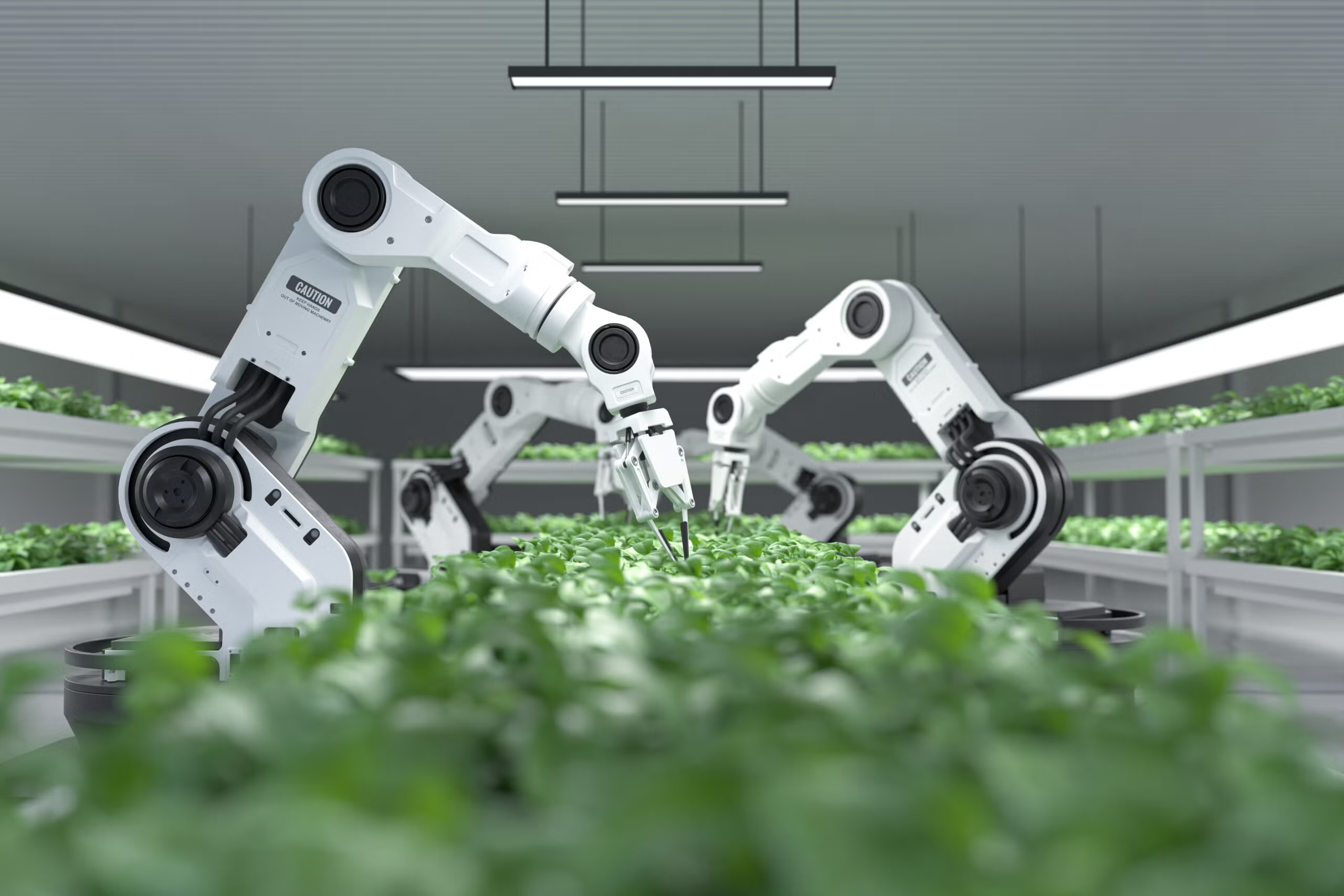
Increased Productivity and Efficiency
Agricultural robotics dramatically increases farm productivity by enabling continuous operations that aren’t limited by human working hours or fatigue. Farming robots can work 24/7, performing tasks faster and more consistently than human workers while eliminating downtime. This operational efficiency translates directly into increased output per acre and per labor hour, improving farm profitability and competitiveness. Smart farming automation allows farmers to accomplish more with fewer resources, scaling operations without proportionally increasing labor costs.
The data-driven nature of robotic farming enhances decision-making quality, replacing guesswork with precise information about every aspect of farm operations. Precision agriculture robots generate actionable insights that optimize input timing and application rates, reducing waste while maximizing effectiveness. The productivity gains from agricultural robotics compound over time as machine learning systems continuously improve their performance based on accumulated experience.
Labor Shortage Solutions
The agricultural sector faces critical labor shortages worldwide, with seasonal workers becoming increasingly difficult to recruit and retain. Agricultural robots provide a sustainable solution to this workforce crisis, performing labor-intensive tasks without dependence on human availability. Robotic farming systems eliminate the challenges of worker training, turnover, and variable quality, providing consistent performance regardless of external labor market conditions.
By automating the most physically demanding and repetitive tasks, farming robots allow human workers to focus on skilled management, maintenance, and decision-making roles. This transition creates more attractive agricultural employment opportunities while solving the immediate labor availability problem. For farms in regions with severe labor constraints, agricultural robotics represents the difference between remaining operational and abandoning production entirely.
Precision and Reduced Waste
Precision agriculture enabled by robotics achieves resource utilization efficiency impossible with traditional methods. Agricultural robots apply water, fertilizers, and pesticides only where needed, in exactly the right quantities, reducing input costs by 20-40% while minimizing environmental runoff. Robotic farming systems can treat individual plants rather than entire fields, targeting interventions to specific problems and eliminating broadcast applications.
This precision extends to harvesting, where farming robots pick only produce meeting quality specifications, reducing field waste and post-harvest sorting labor. Smart farming robotics also minimize crop damage during operations, with gentle handling that reduces bruising and mechanical injury. The cumulative effect of precision across all farm operations significantly improves resource efficiency and reduces the environmental footprint of food production.
Environmental Sustainability
Agricultural robotics advances environmental sustainability by dramatically reducing chemical inputs and soil disturbance. Robotic weeding eliminates or minimizes herbicide use, protecting water quality and soil biology while preventing development of resistant weed populations. Precision application of fertilizers prevents nutrient runoff that causes water pollution and algal blooms. Smart farming robots enable reduced tillage practices that preserve soil structure, organic matter, and carbon sequestration.
The electrification of many farming robots, particularly those powered by solar energy, reduces greenhouse gas emissions from agricultural operations. Agricultural robotics also enables more intensive crop monitoring that detects pest and disease problems early, allowing targeted biological interventions instead of prophylactic chemical applications. These environmental benefits position robotic farming as essential technology for achieving sustainable intensification—producing more food with less environmental impact.
Data-Driven Decision Making
Agricultural robots generate unprecedented volumes of high-quality farm data that transform management decision-making. Every operation performed by robotic farming systems creates detailed records of locations, timing, conditions, and outcomes. This information feeds into farm management platforms that provide comprehensive analytics, trend analysis, and predictive modeling. Smart farming transitions from reactive problem-solving to proactive optimization based on objective evidence.
The integration of precision agriculture robotics with artificial intelligence creates self-improving systems that recognize patterns, predict outcomes, and recommend optimal strategies. Farmers gain insights into soil variability, microclimatic effects, variety performance, and treatment effectiveness at unprecedented resolution. This data-driven approach to agricultural robotics enables continuous improvement in productivity, quality, and profitability year after year.
Key Technologies Powering Agricultural Robots
Artificial Intelligence and Machine Learning
Artificial intelligence serves as the brain of modern agricultural robotics, enabling machines to perceive their environment, make decisions, and learn from experience. Machine learning algorithms trained on millions of images can identify plant species, assess ripeness, detect diseases, and distinguish crops from weeds with superhuman accuracy. Deep learning networks process sensor data to predict optimal treatment timing, yield potential, and quality outcomes. The AI capabilities in farming robots continuously improve through accumulated operational data, making systems more effective over time.
Computer vision powered by AI enables robotic farming systems to navigate complex field environments, avoid obstacles, and perform delicate manipulation tasks. Natural language processing allows farmers to interact with smart farming systems using voice commands or text queries. Predictive analytics powered by machine learning forecasts pest pressure, disease risks, and market conditions, enabling proactive management. The convergence of AI and agricultural robotics creates intelligent systems that augment and eventually surpass human capabilities in many farming tasks.
GPS and Navigation Systems
Precision navigation forms the foundation of autonomous agricultural robots, with GPS technology enabling centimeter-level positioning accuracy. Real-time kinematic (RTK) GPS correction systems allow farming robots to follow precise paths, return to exact locations, and coordinate activities across multiple machines. Autonomous navigation algorithms combine GPS data with inertial measurement units, wheel encoders, and computer vision to achieve reliable operation in variable field conditions.
Advanced robotic farming systems use simultaneous localization and mapping (SLAM) technologies to create detailed field maps while navigating, enabling operation even where GPS signals are degraded. Path planning algorithms optimize routing to minimize soil compaction, reduce travel distance, and maximize operational efficiency. The navigation capabilities of agricultural robotics enable coordination between multiple robots working simultaneously, creating efficient swarm behaviors for large-scale operations.
Sensors and Computer Vision
Agricultural robots employ diverse sensor technologies to perceive their environment with capabilities exceeding human senses. RGB cameras provide visual information for plant identification and navigation. Multispectral and hyperspectral sensors detect plant stress, nutrient status, and disease symptoms invisible to the naked eye. Thermal imaging reveals water stress and helps optimize irrigation. LiDAR creates three-dimensional maps of crop canopies, measuring volume and structure. All these sensing modalities feed smart farming systems with rich information for informed decision-making.
Computer vision algorithms process sensor data in real-time, enabling farming robots to make split-second decisions about plant treatment, navigation adjustments, or quality assessments. Object detection networks identify fruits, vegetables, weeds, and pests. Semantic segmentation algorithms distinguish different plant organs and structures. The sensor fusion approaches in modern agricultural robotics combine multiple data streams to achieve robust perception under varying lighting, weather, and field conditions.
Autonomous Systems and IoT Integration
Autonomous operation capabilities allow agricultural robots to work independently with minimal human supervision, dramatically improving operational efficiency. Robotic farming systems integrate with Internet of Things platforms, connecting to weather stations, soil sensors, irrigation controllers, and farm management software. This connectivity creates coordinated smart farming ecosystems where decisions made by one system inform and trigger actions in others.
Cloud computing enables agricultural robotics systems to access powerful computational resources for complex data analysis and AI processing. Edge computing capabilities allow farming robots to make time-critical decisions locally while uploading summaries for later analysis. Wireless connectivity between robots enables collaborative behaviors where multiple machines work together as a coordinated team. The IoT integration of precision agriculture robotics creates comprehensive digital twins of farm operations, enabling simulation, optimization, and predictive management.
Challenges and Limitations of Agricultural Robotics
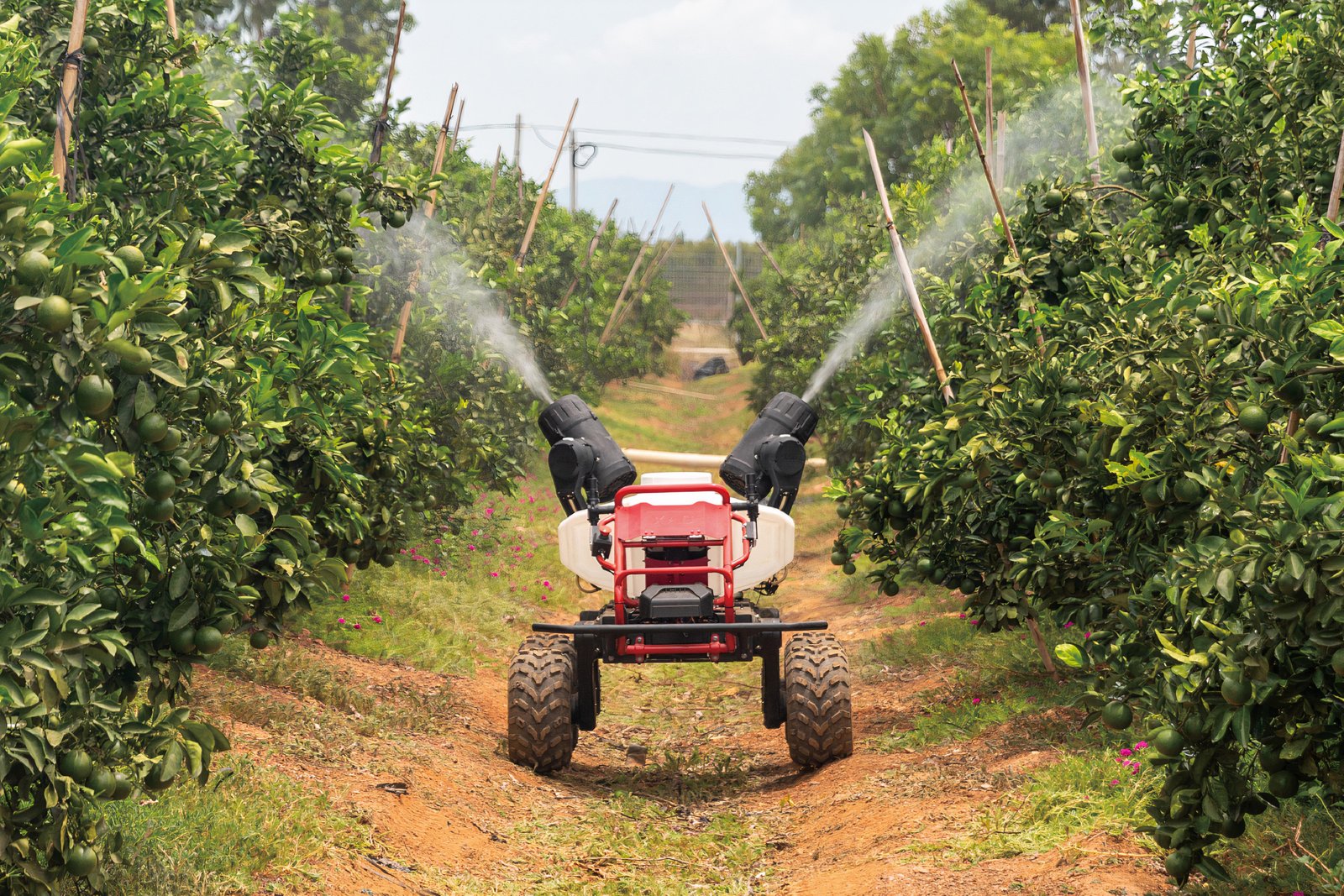
High Initial Investment Costs
The upfront capital required for agricultural robotics represents a significant barrier to adoption, particularly for small and medium-sized farms. Advanced farming robots can cost from tens of thousands to hundreds of thousands of dollars, requiring substantial investment before any return is realized. The total implementation cost of robotic farming includes not just machines but supporting infrastructure such as GPS base stations, connectivity systems, and training. This financial hurdle prevents many farmers from accessing smart farming technologies despite their long-term economic benefits.
Financing options for agricultural robots remain limited compared to conventional farm equipment, with lenders often uncertain about the technology’s reliability and resale value. The rapid pace of technological advancement creates concerns about obsolescence, making farmers hesitant to commit to specific platforms. However, emerging business models including robotics-as-a-service, leasing arrangements, and cooperative ownership are beginning to address the cost barrier, making agricultural robotics more accessible to a broader range of operations.
Technical Complexity and Training Requirements
Operating and maintaining robotic farming systems requires technical skills that many farmers lack, creating a knowledge gap that slows adoption. Agricultural robots involve complex software, sensors, mechanical systems, and connectivity components that can malfunction or require calibration. Troubleshooting problems often requires specialized technical knowledge rather than traditional mechanical repair skills. The learning curve associated with smart farming technologies can be steep, particularly for farmers accustomed to conventional equipment.
Training programs for agricultural robotics are still developing, with limited availability in rural areas where farmers operate. The rapid evolution of farming robots means that training quickly becomes outdated as new features and capabilities are introduced. Technical support from manufacturers varies in quality and availability, leaving some early adopters frustrated when problems arise. Overcoming this challenge requires investment in farmer education, improved user interfaces, and reliable support networks that make robotic farming accessible to operators with varying technical backgrounds.
Infrastructure and Connectivity Issues
Many agricultural robots require reliable internet connectivity for full functionality, yet rural areas often have poor broadband infrastructure. Cloud-based processing, remote monitoring, software updates, and data synchronization all depend on connectivity that may be intermittent or unavailable in farm locations. This infrastructure gap limits the effectiveness of smart farming systems and prevents access to advanced features that rely on cloud computing.
Field conditions also present challenges for robotic farming, with uneven terrain, obstacles, varying soil conditions, and weather extremes affecting robot performance. Agricultural robotics designed for level, well-maintained fields may struggle in real-world conditions with rocks, ruts, standing water, or variable crop stands. Power infrastructure for charging electric robots may be limited in remote field locations. Addressing these challenges requires both technological adaptation in robot design and investment in rural infrastructure that supports precision agriculture technology deployment.
Reliability and Maintenance Concerns
The reliability of agricultural robots in harsh farming environments remains a concern, particularly during critical time windows when equipment downtime directly impacts crop success. Farming robots exposed to dust, moisture, temperature extremes, vibration, and mechanical stress face durability challenges. Component failures during planting or harvest seasons can result in significant losses if backup systems aren’t available. The maintenance requirements of sophisticated robotic farming equipment may exceed the capabilities of local repair shops.
Parts availability for agricultural robotics can be problematic, particularly for newer platforms with limited market penetration. Scheduled maintenance protocols for robots may not align well with the seasonal, weather-dependent nature of farming. Software bugs and integration issues between different smart farming systems can create operational problems that are difficult to diagnose and resolve. Building confidence in agricultural robotics reliability requires proven track records, robust designs, comprehensive warranties, and responsive service networks that minimize downtime.
The Future of Agricultural Robotics
Emerging Technologies and Innovations
The future of agricultural robotics includes exciting developments such as swarm robotics where large numbers of small, simple robots work cooperatively to accomplish complex tasks. Soft robotics technology promises even gentler handling of delicate produce, reducing damage and expanding the range of crops suitable for robotic harvesting. Biomimetic designs inspired by insects and other organisms may create more efficient, adaptable farming robots for challenging environments.
Integration of agricultural robots with synthetic biology and genetic editing technologies could create crops specifically optimized for robotic cultivation and harvesting. Advanced materials including self-healing polymers and shape-memory alloys may improve robot durability and reduce maintenance. Quantum computing could eventually enable real-time optimization of incredibly complex farm systems. The convergence of robotic farming with other agricultural technologies promises innovations that transform food production in ways we’re only beginning to imagine.
Integration with Sustainable Farming Practices
Agricultural robotics will play a central role in advancing regenerative agriculture and organic farming practices. Robotic weeding enables chemical-free production at commercial scale, making organic management economically viable for more farms. Precision application of biological pest control agents and beneficial microorganisms becomes practical with farming robots that can target treatments to specific locations. Cover crop management, including inter-seeding and selective termination, becomes feasible with robots that can navigate complex multi-species plantings.
Smart farming robots will enable carbon farming practices by facilitating reduced tillage, cover cropping, and compost application that build soil organic matter. Monitoring robots will quantify carbon sequestration, providing verifiable data for carbon credit markets. Agricultural robotics designed for biodiversity enhancement could manage hedgerows, wildlife corridors, and pollinator habitat as integral parts of farm operations. This integration of technology with ecological principles creates truly sustainable intensification where productivity and environmental health advance together.
Market Growth and Economic Impact
The agricultural robotics market is experiencing explosive growth, with projections indicating expansion from several billion dollars to over $20 billion by 2030. Investment in robotic farming startups has surged as venture capital recognizes the sector’s potential. Major agricultural equipment manufacturers are acquiring robotics companies or developing in-house capabilities to remain competitive. This market growth indicates that smart farming technology is transitioning from experimental to mainstream status.
The economic impact extends beyond equipment sales to include services, software subscriptions, data analytics, and consulting. Employment in agricultural technology is growing rapidly, creating high-skill jobs in rural areas. Farmers adopting agricultural robotics report improved profitability despite high initial costs, with return on investment periods decreasing as technology matures. The democratization of precision agriculture through more affordable robotics promises to level the playing field between large and small farms.
Policy and Regulatory Developments
Governments worldwide are recognizing the importance of agricultural robotics for food security and are beginning to develop supportive policies. Subsidy programs, tax incentives, and grant funding increasingly target smart farming technology adoption. Safety regulations for autonomous farming robots are being developed to ensure worker safety and prevent accidents. Data privacy and ownership regulations will shape how farm data collected by robotic farming systems can be used and shared.
Trade policies may need adjustment as agricultural robotics changes labor requirements and productivity potential across different regions. Intellectual property frameworks must balance incentivizing innovation with preventing monopolistic control of essential agricultural technologies. International standards for agricultural robots will facilitate global trade in equipment while ensuring quality and safety. These regulatory developments will significantly influence how quickly and equitably the benefits of robotic farming spread across the global agricultural community.
More Read: 10 Must-Have Robotics Skills for Thriving in Modern Industries
Conclusion
Agricultural robotics represents a transformative force reshaping the future of global food production through intelligent automation, precision technology, and data-driven decision-making. From robotic harvesting and autonomous weeding to precision planting and continuous crop monitoring, these sophisticated systems address agriculture’s most pressing challenges including labor shortages, environmental sustainability, resource efficiency, and productivity demands.
While barriers such as high initial costs, technical complexity, and infrastructure limitations persist, rapid technological advancement and innovative business models are making smart farming increasingly accessible. The integration of agricultural robots with artificial intelligence, IoT connectivity, and sustainable practices promises a future where farms operate with unprecedented efficiency while minimizing environmental impact. As the global population grows and climate pressures intensify, robotic farming will be essential for ensuring food security, creating an agricultural system that is more productive, sustainable, and resilient than ever before.

